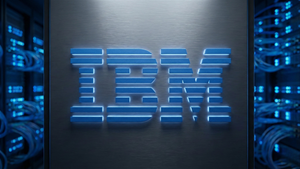
Three weeks ago, I watched a potential $2.8 million office building sale in Baton Rouge collapse because the buyer discovered the “high-speed internet” the seller advertised was actually a 25 Mbps DSL connection shared across 12,000 square feet.
The buyer? A software company planning to relocate 47 employees from Austin. They needed symmetrical gigabit speeds for cloud development work, video conferencing with international clients, and real-time data processing. What they found was internet infrastructure from 2008 that would have cost them $340,000 to upgrade properly.
Deal dead. Seller stuck with a property that had been “positioned for tech tenants” but couldn’t actually serve them.
Here’s the kicker: six months earlier, I’d helped another client in Lafayette spend $180,000 upgrading a similar building to true fiber connectivity. That property now commands $28.50/sq ft versus the $19.75 market rate for comparable Louisiana commercial real estate for lease on Realmo and other listing platforms. The ROI? 156% annually just from rent premiums, not counting the 40% increase in property value.
The Hidden Infrastructure Crisis Crushing Louisiana Property Values
Here’s what’s happening in Louisiana commercial real estate that nobody wants to talk about: we’re sitting on a massive infrastructure divide that’s creating winners and losers in ways most owners don’t understand.
On one side, you have properties with legitimate fiber connectivity pulling premium rents and appreciating 15-25% faster than market averages. On the other side, you have buildings with “business internet” that can’t actually support modern business operations, watching tenant turnover increase and rents stagnate.
The problem is that most property owners – and even some brokers – don’t understand the difference between “having internet” and “having internet infrastructure that creates value.”
Take my client Robert’s experience with a 35,000 sq ft office complex in Metairie. When he bought it two years ago, the marketing materials touted “high-speed business internet throughout.” What they didn’t mention was that the “high-speed” connection was a 100 Mbps cable internet line serving the entire building through outdated internal wiring.
His first tenant – a medical billing company with 23 employees – started experiencing connection drops during peak hours. Video calls were choppy. Cloud software was slow. Their productivity tanked, and they gave notice after eight months.
Why Louisiana’s Geography Creates Hidden Opportunities
Everyone knows Louisiana’s physical geography creates challenges – wetlands, hurricanes, scattered population centers. What most investors miss is how these challenges create massive opportunities for properties that solve connectivity problems.
The Rural-Urban Connectivity Arbitrage
Here’s something most investors overlook: Louisiana’s scattered development patterns create situations where rural and suburban properties with proper fiber infrastructure can command urban-level rents.
I recently helped a client lease a 8,000 sq ft facility in Thibodaux – population 14,500 – for $22/sq ft annual rent. That’s higher than many spaces in New Orleans suburbs. Why? The building had dedicated fiber infrastructure that let a marketing agency serve New Orleans clients while offering employees affordable living and easy parking.
The same dynamic is happening across Louisiana. Businesses are discovering they can access urban markets from rural locations IF the digital infrastructure supports it. Properties that solve this equation are capturing value most investors miss.
The Hurricane Hardening Premium
Louisiana’s hurricane exposure creates another hidden value driver: businesses will pay premiums for internet infrastructure designed to survive weather events.
My client Maria invested $95,000 in underground fiber and backup power systems for her office building in Lake Charles. When Hurricane Laura hit, her building was one of only three in the area with working internet within 48 hours of power restoration. Her tenants renewed early, and she’s had a waiting list ever since.
The lesson: weather-resistant connectivity infrastructure isn’t just a cost – it’s a competitive advantage that drives tenant retention and premium pricing.
The Assessment Framework That Reveals Hidden Value and Problems
Most property owners evaluate internet infrastructure like they’re checking a box: “Yes, we have business internet.” That’s like saying “Yes, we have plumbing” without specifying whether it’s PVC or cast iron from 1952.
Here’s the framework I use to evaluate commercial property internet infrastructure, and it’s revealed hundreds of thousands in hidden value and avoided disasters:
The Bandwidth Reality Check
The standard “bandwidth test” most people run is completely useless for commercial property evaluation. Running a speed test at 2 PM on a Tuesday tells you nothing about performance when 40 people are on video calls during a Friday afternoon planning session.
The real test: Document bandwidth performance during peak usage hours (typically 9-11 AM and 2-4 PM) across multiple days. Calculate bandwidth per employee – most modern businesses need 10-25 Mbps per worker for reliable performance.
My client Jennifer discovered this the expensive way. Her 15,000 sq ft building tested at 200 Mbps during off-peak hours, which seemed adequate for potential tenants. But during business hours, performance dropped to 45 Mbps due to shared infrastructure and network congestion. A consulting firm that had committed to lease 6,000 sq ft pulled out after their IT department ran peak-hour tests.
The Infrastructure Archaeology Audit
Most commercial buildings have “internet infrastructure” that’s actually layers of outdated decisions and quick fixes. Understanding what you’re really working with requires what I call “infrastructure archaeology” – tracing how connectivity actually reaches each space.
Start with the service entrance: Is the building served by fiber, cable, or DSL? How recent is the installation? Is there redundancy (multiple service providers)?
Map the internal distribution: How does connectivity reach individual suites? Cat5 cable from 1998? Cat6? Fiber throughout? Shared switches in utility closets?
Identify capacity bottlenecks: Where are the constraints that limit performance under load? Often it’s not the internet connection itself but internal infrastructure that can’t handle modern usage patterns.
The Redundancy and Reliability Analysis
Business tenants increasingly require internet uptime guarantees, especially for operations involving customer service, e-commerce, or cloud-based software. This means evaluating not just connectivity but backup systems and failure recovery.
Service provider redundancy: Does the building have access to multiple ISPs? Can tenants failover automatically if the primary connection fails?
Power backup systems: Internet equipment needs battery backup or generator power to survive brief outages. Many buildings have backup power for lights and HVAC but not for network infrastructure.
Internal network resilience: Are network switches and routers enterprise-grade equipment that can handle sustained usage, or consumer-grade devices that will fail under business loads?
The Lease Negotiation Strategies That Protect Everyone
Most commercial leases treat internet like a utility: “Tenant responsible for arranging service.” That approach creates problems for everyone when business needs don’t match available infrastructure.
The Infrastructure Disclosure Framework
Smart landlords are getting ahead of connectivity issues by providing detailed infrastructure specifications upfront. This prevents misunderstandings and lets tenants make informed decisions.
Document current capabilities: Provide speed tests, infrastructure maps, and service provider options. Include any limitations or shared resources that might affect performance.
Specify upgrade possibilities: Can additional bandwidth be added? What would it cost? How long would installation take? This information helps tenants evaluate long-term suitability.
Clarify responsibilities: Who pays for what types of improvements? What happens if tenant needs exceed current infrastructure?
The Performance Guarantee Approach
Progressive landlords are offering internet performance guarantees as differentiators in competitive markets. This approach commands premium rents while reducing tenant turnover.
Minimum bandwidth guarantees: “Landlord guarantees minimum 50 Mbps dedicated bandwidth to each suite during business hours.”
Uptime service level agreements: “Landlord provides 99.5% internet uptime with financial penalties for failures.”
Response time commitments: “Technical support response within 2 hours for connectivity issues.”
These guarantees require solid infrastructure and relationships with reliable service providers, but they justify rent premiums of $3-8 per square foot annually in competitive markets.
The Cost-Sharing Strategy
For major infrastructure improvements, creative landlords are structuring cost-sharing arrangements that benefit everyone while protecting their investment.
Tenant improvement credits: Landlords contribute to connectivity upgrades as part of tenant improvement allowances, then recover costs through higher rents.
Long-term amortization: Spread upgrade costs across lease terms with early termination protections.
Multi-tenant coordination: When upgrades benefit the entire building, coordinate tenant contributions based on square footage or usage requirements.
The Louisiana Geographic Advantage Most Investors Miss
Louisiana’s position in global connectivity infrastructure creates opportunities that most commercial real estate investors completely overlook.
The International Gateway Effect
Louisiana hosts major international internet infrastructure that connects North America to Central and South America. This creates opportunities for properties that can tap into this backbone infrastructure.
The Port of New Orleans area, in particular, benefits from submarine cable landings and carrier hotels that provide access to international fiber networks. Properties with connections to these networks can serve businesses requiring global connectivity at costs impossible in other markets.
The Energy Sector Connectivity Premium
Louisiana’s energy sector has driven massive investments in industrial-grade connectivity infrastructure. Oil and gas operations require satellite uplinks, fiber networks, and redundant systems that create spillover opportunities for nearby commercial properties.
I’ve seen office buildings near energy facilities leverage existing industrial fiber networks to offer connectivity capabilities that rival major metropolitan areas. The key is understanding these infrastructure maps and positioning properties to benefit from existing investments.
The Future Trends Creating Value Today
Smart Louisiana commercial real estate investors are positioning properties for technology trends that will reshape business location decisions over the next decade.
The 5G Integration Opportunity
5G deployment in Louisiana is creating new hybrid connectivity strategies. Properties that combine fiber infrastructure with 5G capabilities offer tenants flexibility that pure fiber or wireless solutions can’t match.
The most successful approach: fiber for primary connectivity and bandwidth-intensive applications, 5G for backup, mobile workforce support, and IoT device connectivity. Buildings positioned for both technologies will capture businesses that need maximum flexibility.
The Edge Computing Infrastructure Play
As more data processing moves closer to users, Louisiana properties positioned near edge computing infrastructure will command premiums from businesses requiring low-latency applications.
Gaming companies, financial services, and IoT applications increasingly need sub-10 millisecond response times that require local data processing. Properties that can provide or access edge computing resources will serve markets most buildings cannot.
The Remote Work Infrastructure Evolution
Remote work isn’t eliminating office space – it’s changing what businesses need from office connectivity. Companies are consolidating into smaller spaces but requiring dramatically higher per-employee connectivity for hybrid work models.
The Investment Strategy That’s Creating Millionaires
The Louisiana commercial real estate investors capturing the biggest returns understand that internet infrastructure investments create value through multiple channels simultaneously.
The Rent Premium Multiplier
Properties with superior connectivity command 15-35% rent premiums in most Louisiana markets. But the real value comes from the tenant quality these properties attract.
Technology companies, professional services firms, and knowledge workers pay premiums for reliable connectivity and tend to be stable, long-term tenants. They also often expand their space needs as they grow, creating internal expansion opportunities.
The Property Value Acceleration
Beyond rent premiums, connectivity infrastructure dramatically affects property valuations. Buildings positioned for technology tenants benefit from cap rate compression – investors will accept lower yields for properties with stable, high-quality tenant bases.
My client Kevin’s connectivity upgrade increased his property value by 31% in 18 months. The $240,000 infrastructure investment generated $1.2 million in additional property value through higher rents and better capitalization rates when he sold.
The Defensive Value Protection
Even if you’re not targeting technology tenants specifically, inferior connectivity infrastructure makes properties vulnerable to obsolescence. As connectivity requirements increase across all business types, properties without adequate infrastructure face declining competitiveness.
This is particularly important in Louisiana markets where new construction is limited. Existing buildings that can’t support modern business connectivity needs will see increasing vacancy rates and declining rents versus upgraded properties.
The Bottom Line
Louisiana’s commercial real estate market is in the middle of a digital infrastructure revolution that’s creating massive opportunities for investors who understand what’s actually happening.
The old model – buildings with “business internet” serving generic office tenants – is being replaced by properties with robust connectivity infrastructure serving knowledge workers, technology companies, and businesses that depend on reliable digital communications.
This transition is creating winners and losers faster than most investors realize. Properties that solve connectivity challenges are commanding premium rents, attracting stable tenants, and appreciating faster than market averages. Properties that don’t are becoming harder to lease and less valuable over time.








